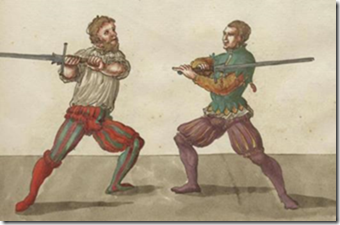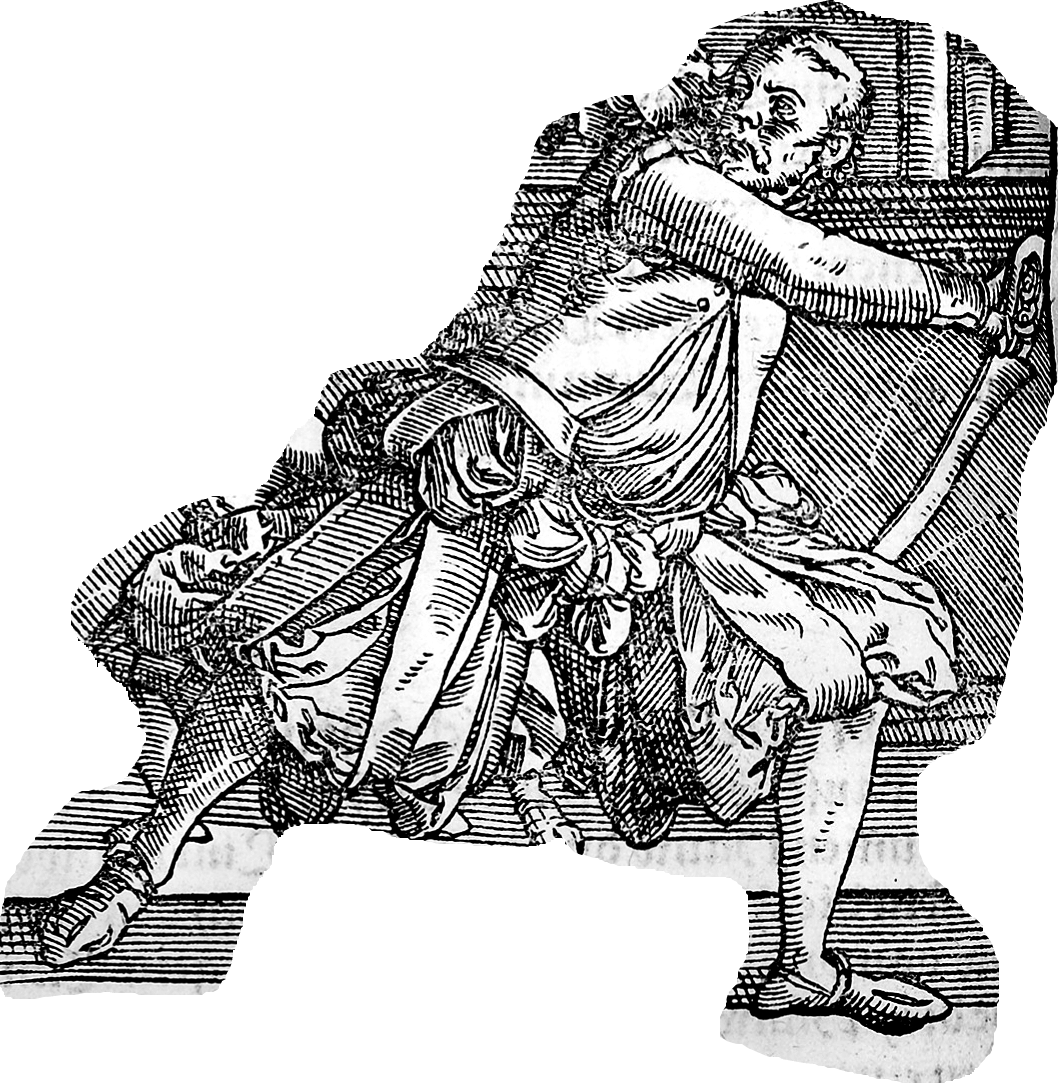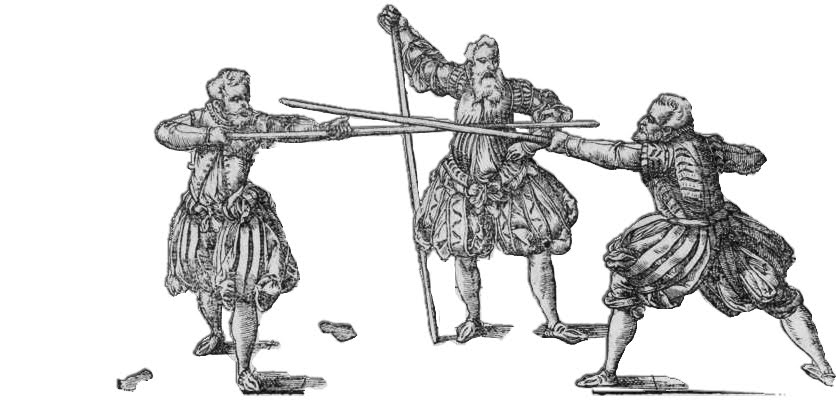Mittelhut
Contents |
Middle Guard
Longsword
A high side guard which forms one of the secondary guards in Meyer. The mittelhut is not illustrated in Meyer's text for longsword, but is shown for dussack and is also shown in Mair (shown above).
A middle guard held to the side of the body; a natural start and end point for a mittelhauw strike. Care should be taken not to let the elbow and hands extend too far in front of the body lest they become a target.
The mittelhut can be font or back weighted posture. A back weighted mittelhut can transition to a zornhut simply by turning the torso away from the opponent so the point turns toward the opponent behind the fencer's back.
Dussack
As with the longsword this is the terminal or starting point for a Mittelhauw. The middle guard is often depicted with a backward weighted posture as shown in this image, aiding in evasions and giving more power to cuts from it, but it can also be performed front weighted.
Polearm
From high guard lower the staff to be directly in line with the opponent’s chest/face. The rear hand remains high so the staff sticks out and threatens the thrust. This is the middle guard.
It is also called straight parrying (Gerade Versetzung), and when the weapon is drawn back with a significant amount of butt by the side, field guard.
Dagger
As with most dagger guards this one is much more generic than the sword equivalents, being any guard held at the belt/torso level, be it off to one side or centrally. In all cases the point is assumed to be toward the opponent ready for a stabbing attack.
Generally the guards are held in reverse grip (thumb toward the pommel) however several sections of the text describe attacks and methods from the orthodox (sword like) grip.
A middle guard on the left from Mair is shown in the illustration, in this case with an orthodox grip, the opponent stands in a right Kreutzhut.



